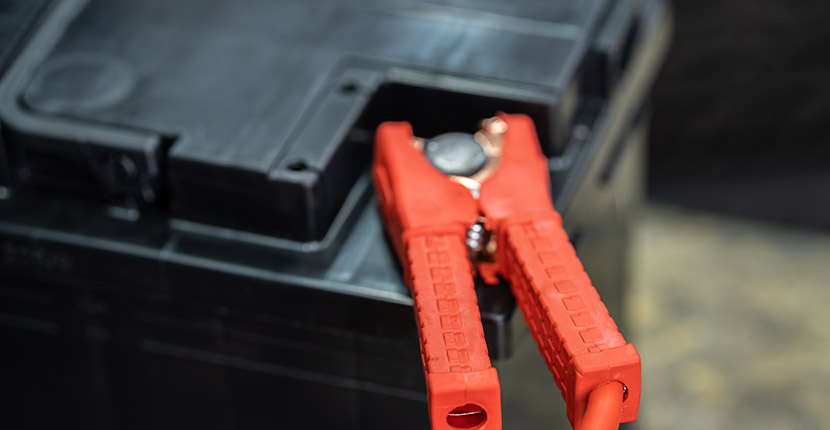How Do Battery Charging Cycles Work?
- by Bryan Veldboom - updated on 11/16/2021

"Cycles" is one of those terms that gets thrown around a lot when discussing batteries, but what does it actually mean? Before we define that, we first have to understand exactly how batteries work. A battery contains stored chemical energy that is converted into electrical energy when attached to some external application, such as a car, boat or laptop computer.
What is a Discharge Cycle?
Electricity is produced by a chemical reaction within the battery. As this process continues, the components inside the battery undergo a number of chemical transformations that eventually render them incapable of delivering any more electricity. This process of going from fully charged to zero represents one full discharge cycle.
After a rechargeable battery has been completely discharged, it can be recharged again by applying electrical energy to the battery. This reverses the chemical processes it went through while discharging, causing it to become recharged again. For a more in-depth look at this process, read our blog article "How Does a Car Battery Work."
What is a Battery's Cycle Life?
There are only so many times a battery can undergo the process of discharging and recharging before it completely breaks down. Cycle life refers to how many complete charges and discharges a rechargeable battery can undergo before it will no longer hold a charge. A charging cycle is completed when a battery goes from completely charged to completely discharged. Therefore, discharging a battery to 50% and then charging it back up to 100% would only be counted as 1/2 of a single battery cycle.
Battery cycles are used as an estimate of what a battery's overall lifespan will be. If you have a sealed lead acid (SLA) battery with a lifespan of 500 cycles, you can reasonably expect it to last 500 complete charging cycles. Keep in mind that the estimated number of charging cycles does not always indicate how long a battery will last since there are other factors at work, including what temperatures the battery is exposed to and how well it is maintained.
How Many Cycles Should a Battery Have?
The number of cycles a battery will have can range anywhere from 500 to 1200, depending on both the type and chemistry of the battery. Let's use lead acid boat batteries as an example of how battery types affect cycle life. Boats typically use two different types of batteries, SLI (starting, lighting and ignition) and deep cycle batteries. Both SLI and deep cycle batteries are lead acid batteries, however, because of the way in which they are manufactured, a deep cycle battery will have 40% more cycles than an SLI option.
Now let's take a look at how chemistry impacts a battery's total number of charge cycles. Both SLA and lithium iron phosphate (LiFePO4) batteries can be used to power some of the same things (medical carts, forklifts, backup emergency lighting and UPS units). However, the difference in chemistry between these two batteries results in a wildly different number of total charging cycles. An SLA battery will typically last between 50 and 500 cycles, while a LiFePO4 battery will last an impressive 1,000 to 10,000 cycles.
How Do You Determine a Battery's Depth of Discharge?
The depth of discharge (DoD) refers to the percentage of the battery that has been discharged relative to its total battery capacity. It is the opposite of the battery's state of charge (SoC). As the SoC decreases, the DoD increases. Here is how to calculate the DoD. If a 100Ah battery is discharged for 20 minutes with a current draw of 50 amps, the depth of discharge is 50A x 20 min / 60 min = 16.7%.
Is the 40-80 Battery Rule Real?
The 40-80 rule refers to the idea that you should try to keep your battery charged between 40% and 80%, not allowing it to drop below 40% and not charging it above 80%. This rule is true for lithium-ion batteries (like those found in your cell phone), but not true for other battery types such as lead acid.
Allowing a lithium-ion battery to drop below 40% can shorten its lifespan. If you charge a lithium-ion battery to 100%, it will stop charging, however, if it stays connected to the charger, it will use a little bit of energy every time it drops down to 99% in trying to get it back up to 100%. Doing this raises the battery's temperature, which also shortens a battery's lifespan. That's why with lithium-ion batteries, it's best not to charge them all the way up to 100%.
Shop Batteries Plus for All Your Battery Needs
Shop our selection of thousands of batteries for any application. You'll also find an impressive selection of battery chargers for vehicles, laptops, cell phones and more. Are you having trouble with the battery in your car, truck, cell phone or other application? The experts at your nearest Batteries Plus will be happy to test your battery free of charge. We also replace batteries in cell phones, tablets, watches and key fobs. Plus, if you purchase a new auto battery from us, we'll even install it for you for free (valid on most vehicles at most locations).